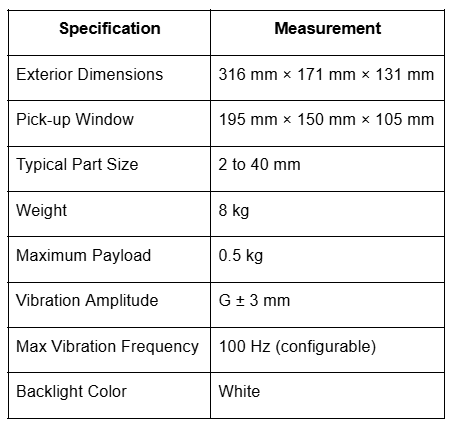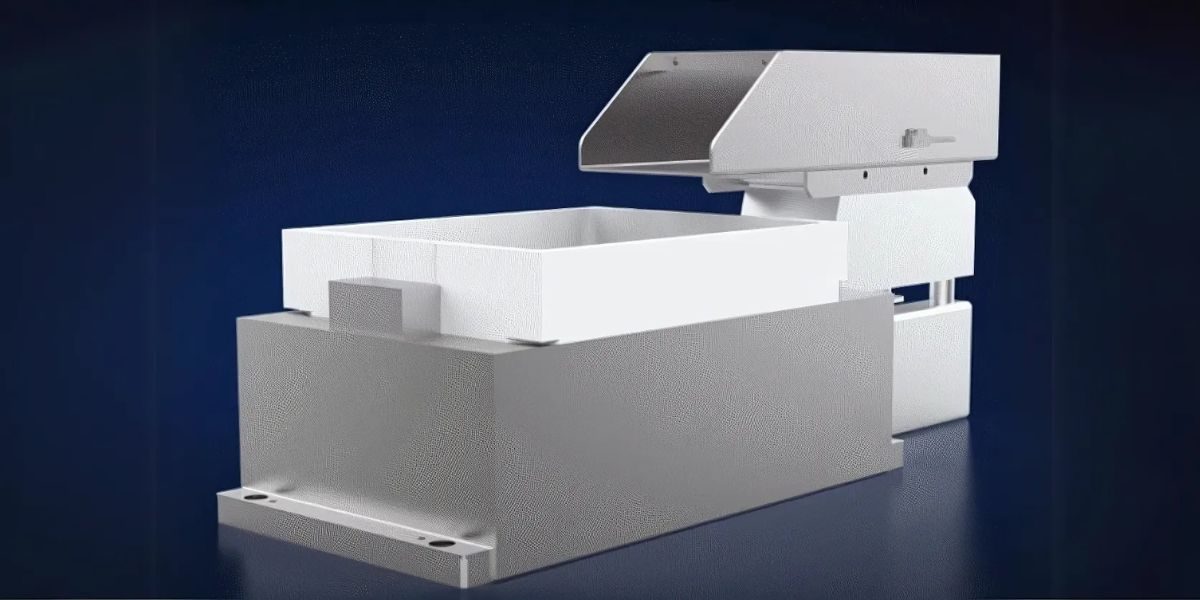By: SEO Mavens
Adaptive feeding systems have become indispensable components in modern automated manufacturing, transforming how production lines handle parts and materials. By integrating vision systems, robotics, and artificial intelligence, these flexible feeder technologies create a seamless workflow that can significantly enhance productivity and responsiveness in dynamic production environments where requirements change frequently.
Unlike conventional systems, flexible feeding technology is designed to address the challenges manufacturers face when dealing with irregular parts and the increasing complexities of small batch manufacturing. These advanced systems help eliminate mechanical reconfiguration when switching between different components, allowing production lines to adapt more quickly to changing demands while minimizing downtime and human intervention—key advantages in many competitive manufacturing settings.
Evolution of Feeding Systems
Feeding systems have transformed over the past decades, from manual operations to sophisticated automated solutions. In the 1950s, simple vibratory bowl feeders emerged as an important advancement, utilizing vibration to separate and orient parts along spiral tracks.
The 1970s saw the integration of basic sensing technologies, while the 1980s introduced programmable logic controllers (PLCs) that improved feeding precision. By the 1990s, machine vision began complementing mechanical feeding systems.
The shift accelerated in the early 2000s with the development of flexible feeders. Unlike their rigid predecessors, these systems combined advanced vision systems with intelligent algorithms to handle multiple part types without frequent mechanical adjustments.
Modern flexible feeder technology offers:
- Multi-part handling capability
- Rapid changeover between production runs
- Reduced tooling costs
- Adaptability to new components
- Integration with Industry 4.0 systems
This evolution continues as manufacturers incorporate AI-driven part recognition and machine learning algorithms that may optimize performance based on operational data.
Overview of the FF220 Flexible Feeder
The FF220 Flexible Feeder, DOBOT’s flagship automated part handling solution, represents a notable advancement in manufacturing technology. This system combines precision engineering with smart vision capabilities to deliver broad versatility across diverse production environments.
Product Concept
DOBOT’s FF220 integrates with production lines, eliminating the need for mechanical reconfiguration when switching between different parts. Its core functionality centers on a vibrating platform that randomly distributes components while an overhead vision system identifies correctly positioned parts for pickup. The system is capable of handling various component sizes and geometries without physical tooling changes, making it suitable for mixed-model production environments. Components fed into DOBOT’s flexible feeder are automatically recognized, located, and presented to robots for precise placement.
Design and Integration
The FF220’s compact design, a hallmark of DOBOT‘s engineering, occupies minimal floor space while aiming to maximize operational efficiency. The modular architecture includes:
- Vibrating platform with adjustable frequency and amplitude
- High-resolution camera system for accurate part recognition
- Integrated LED lighting for consistent imaging
- Direct connectivity with major robot brands
- User-friendly interface for quick recipe changes
DOBOT’s flexible feeder connects to existing production lines through standardized interfaces, helping reduce installation time and complexity. Its programming interface allows operators to teach new parts by capturing images and defining pickup points, enabling changeover times that can be shorter than traditional systems.
Technical Operation and Mechanism
Flexible feeders use advanced automation technology to handle diverse parts without specific tooling requirements. These systems combine mechanical feeding mechanisms with sophisticated vision systems to identify, orient, and deliver components.
Feeding Mechanism
A flexible feeder’s core is its versatile feeding surface—typically a conveyor system or vibrating platform. This surface randomly distributes parts while maintaining optimal spacing for vision recognition. Unlike traditional feeders, flexible feeders don’t require part-specific mechanical tooling, enabling them to handle various components such as:
- Complex geometries with irregular surfaces
- Lightweight plastic components
- Oddly shaped metal parts
- Delicate electronic components
The feeding surface typically includes adjustable vibration parameters (frequency, amplitude) to optimize part movement based on material properties and weight.
Control and Communication
Flexible feeders employ control systems that enable integration with production equipment. The control architecture includes:
- High-speed processors that analyze vision data rapidly
- Real-time communication protocols
- User-friendly HMI interfaces for quick recipe changes
- Robot interfaces compatible with major brands
These communication capabilities allow flexible feeders to exchange operational data with other systems, enabling part recognition, position tracking, and robotic pick-point calculation. The control system continuously adjusts feed rates based on downstream equipment demands to help maintain production flow.
Key Features and Benefits
Flexible feeders represent a strong progression in manufacturing automation. They combine vision systems with robotic handling and offer features that may improve production efficiency and reduce operational costs.
Adaptability
Flexible feeders handle multiple part types without mechanical reconfiguration. The vision system identifies various components regardless of shape, size, or material, reducing the need for separate feeders. This multi-part capability allows a single flexible feeder to potentially replace several traditional bowl feeders, saving floor space and reducing capital investment. Production lines can switch between different components in minutes rather than hours, which makes flexible feeders a compelling option for high-mix environments.
Reliability
Vision-guided technology in flexible feeders is designed to deliver consistent performance. Systems like these have demonstrated part identification accuracy rates reaching up to 99.5% under optimal conditions. Compared to traditional feeders, they may operate continuously for extended periods—up to 5,000 hours—with routine maintenance intervals between 500-1,000 hours. Advanced algorithms can filter out damaged or incorrect parts, which helps prevent jams and reduce downtime. The absence of mechanical tooling results in fewer wear components, potentially lowering maintenance costs.
Ease of Deployment
Flexible feeder systems may require less setup time than traditional bowl feeders. The intuitive interface allows operators to program new parts in relatively short timeframes—often in under 10 minutes. Installation typically requires standard inputs (power, air, network), and integration is simplified through pre-configured protocols compatible with major robot brands.
Production Flexibility
Flexible feeders adjust to shifting production needs. Feed rates can be modified through software rather than hardware, scaling production volumes as needed. Recipe management systems store multiple part configurations, allowing just-in-time manufacturing with minimal setup. This adaptability supports both high-volume and small-batch runs on the same equipment.
Noise Reduction
Flexible feeders operate more quietly than traditional vibratory systems. Running at 65-70 dB, they generate approximately 15-20 dB less noise, helping reduce workplace noise pollution. Programmable vibration patterns facilitate part separation while minimizing acoustic output. This contributes to a more comfortable work environment and may reduce the need for sound-dampening infrastructure.
Detailed Technical Specifications
The FF220 Flexible Feeder incorporates precise specifications, enabling robust performance in automated environments:
FF220 Flexible Feeder

Linear Vibration Feeder (Associated System)
The Linear Vibration Feeder complements the FF220 by delivering components at controlled rates. This system maintains optimal part density, preventing tangling and improving recognition by the vision system. Its design supports various part geometries while minimizing energy consumption.
Industrial Applications of Flexible Feeders
Flexible feeders have contributed to automation across multiple industries by simplifying part handling.
Metal Processing
In metal operations, flexible feeders manage irregular parts such as fasteners and machined components. They help reduce jams associated with inconsistent geometries. A single unit may take the place of multiple traditional feeders, reducing floor space usage and streamlining part changes.
Consumer Electronics
Flexible feeders support electronics production by handling fragile parts like connectors and switches. Vision systems assist in orienting asymmetrical components, helping ensure precise placement. Production lines using flexible feeders have reported faster changeovers, which support responsiveness to evolving product models.
Agile Manufacturing
In agile manufacturing, flexible feeders support just-in-time workflows by enabling fast recipe changes. Contract manufacturers benefit from switching between component types—such as medical devices and automotive parts—without hardware changes. This functionality helps meet variable production demands efficiently.
Summary
Flexible feeders mark a meaningful step in manufacturing automation. These systems integrate vision, robotics, and intelligent control to handle diverse parts without specialized tooling.
The transition from traditional bowl feeders to flexible systems has led to operational improvements in several sectors:
- Metal operations benefit from simplified handling of complex geometries
- Electronics lines achieve quicker transitions between part types
- Agile manufacturing workflows adapt more easily to change
DOBOT’s FF220 demonstrates how compact, programmable feeders can support efficiency and reduce complexity in part handling. As demand for small-batch customization and rapid production increases, flexible feeders offer manufacturers a scalable, cost-effective alternative to traditional feeding methods.
Published by Jeremy S.


















